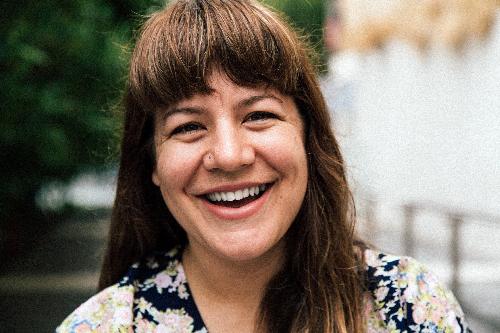Why I Believe in Preaching to Women
by Erica Hamence
I can remember the first time I heard the word ‘vagina’ spoken on stage at church because, as soon as it happened, one of my trainees turned to me with wonder in her eyes and whispered to me, reflecting my own thoughts, ‘That’s the first time I’ve ever heard “vagina†in church.’
It was during a presentation by one of our members, a prominent doctor, who was preparing to deliver medical supplies (including various period-related apparatuses) as part of an overseas mission trip. It was mentioned matter-of-factly, as it should have been, from a medical professional speaking about medical matters, but at the same time, it felt radical. Vaginas! Periods! In church!
This, this contrast between the ordinary things of women’s lives, and the relative rarity of hearing about them from the front of church, is part of why I believe in preaching to women.
I am ministering in a context in which I often get asked why I believe in preaching to men, but I never get asked why I believe in preaching to women. I want to make an argument for that here. Here is what I mean by that: I mean preaching that notices and calls attention to the experiences of women in the text, and the experiences of women that the text speaks to.
Recently, I preached on an incident that Luke records in his gospel, where Jesus is approached by a woman who has been bleeding for 12 years. So, as part of telling this story, I told some of my own bleeding in public stories. I wanted to bring this story from long ago into the real life experiences of many hearing it. To both evoke and contrast with the woman’s desperation and shame. I wanted to name the fact that many of us hear her story not merely with compassion, but with resonance, remembrance, with our own experiences in mind.
I did that not just because drawing in the audience is a good rhetorical tool, but because I am convinced that this is at least part of why Luke included this story, and why he told it the way he did.
When Luke tells us this story, he shows us that this woman has suffered for a long time. He wants us to have a sense of what her life must have been like during those 12 years. He wants us to see what it has cost her already and to understand the stakes for her. She has tried everything to fix it, but nothing has, and so she comes to Jesus secretly, whilst he is in the middle of a crowd, and touches the hem of his robe, hoping that by a miracle, he might heal her. And it does.
Luke tells this story in such a way as to evoke empathy for this woman and her plight. The story draws its power from her desperation, her courage, and from the surprise of Jesus’ response to her. As readers and listeners, we are caught between horror at her situation, and awe at how quickly and beautifully Jesus addresses it.
This story invites us to identify with the woman, and to view her as an exemplar of faith. This is so clearly Luke’s intention that we might miss what is so radical about that; so often, women are obscured, even from narratives that should ordinarily center on them. Hannah Clarke, brutally murdered along with her children by her husband, becomes just the wife of a ‘football star’ (https://www.dailystar.co.uk/news/world-news/rugby-star-rowan-baxter-burnt-21533919). So often, we are called to objectify women, not identify with them. Given this, it is worth noting that Luke could have told the same story with more of a focus on the perspective of one of the crowd – a man brushed up against by this unclean woman, perhaps, a man inconvenienced or threatened by her presence. To have the story reported to us the way it is offers us a beautiful alternative, one which highlights Jesus’ attitude towards women, and invites us to imitate him.
It is a widely recognised feature of Luke’s gospel that he deliberately parallels men and women’s stories throughout (https://margmowczko.com/gendered-pairs-and-parallelism-in-lukes-gospel/). As soon as he has told a story which includes a man’s response to Jesus (for example, Simeon in Luke 2:25), he will tell us about a woman’s response to Jesus (for example, Anna in Luke 2:36). I say this because I want to be clear that to preach about women and to women is not to reorder the Bible’s priorities, but simply to recognise them.
Nor do I intend to suggest that we are supposed to look at the women in these stories instead of Jesus. In fact, I mean the opposite. I mean that it is through seeing these women as the Bible does, that we see God more clearly. This is what the Bible authors do. They do what we ought to do: they pay attention to women as meaningful participants in God’s economy. They take things that are needlessly shameful for women, and things that often happen in secret to women, and they bring them into the open, they make us see them. They honour women for the boldness of their discipleship. They highlight the particularly gendered pain women experience in the world and they ask us to be empathetic towards the women we are reading about. In fact, empathy becomes a hermeneutical key for the reader. Unless we care about the woman and what happens to her or what she does, we do not understand the passage fully.
For example, 1 Samuel starts, not with Samuel, but with Hannah. The narrative of 1 Samuel is going to play out on a grand scale, between kings and priests, but it starts in a much smaller, more personal and quiet place: Hannah’s desire for a child. We see how she is mocked for her childlessness, and critiqued for the expression of her grief and faith. And we also see how God hears her prayers, and she has a son, and he becomes a priest who leads Israel. By starting here, the author shows us how God involves Hannah’s private grief and longing into his plans for all of his people. By showing us this, the author shows us that this is God’s modus operandi – He is always weaving the stories of individuals into His cosmic plans.
The inclusion of women’s stories in the Bible dignifies women, calling us to recognise and respond to God’s care for us, and forming us as an empathetic people. Our preaching must not do less than this.

Erica Hamence is a senior assistant minister at St. Barnabas Anglican Church, Broadway, NSW. She trained for ministry at Ridley College and SMBC. St. Barnabas brings together people from a variety of church backgrounds (and none at all), and this means that, for many, the question of women’s involvement in ministry is a live, and lively one. It’s an exhausting privilege to work in that context and to help sketch out previously unconsidered possibilities for men and women’s partnership in the gospel.




